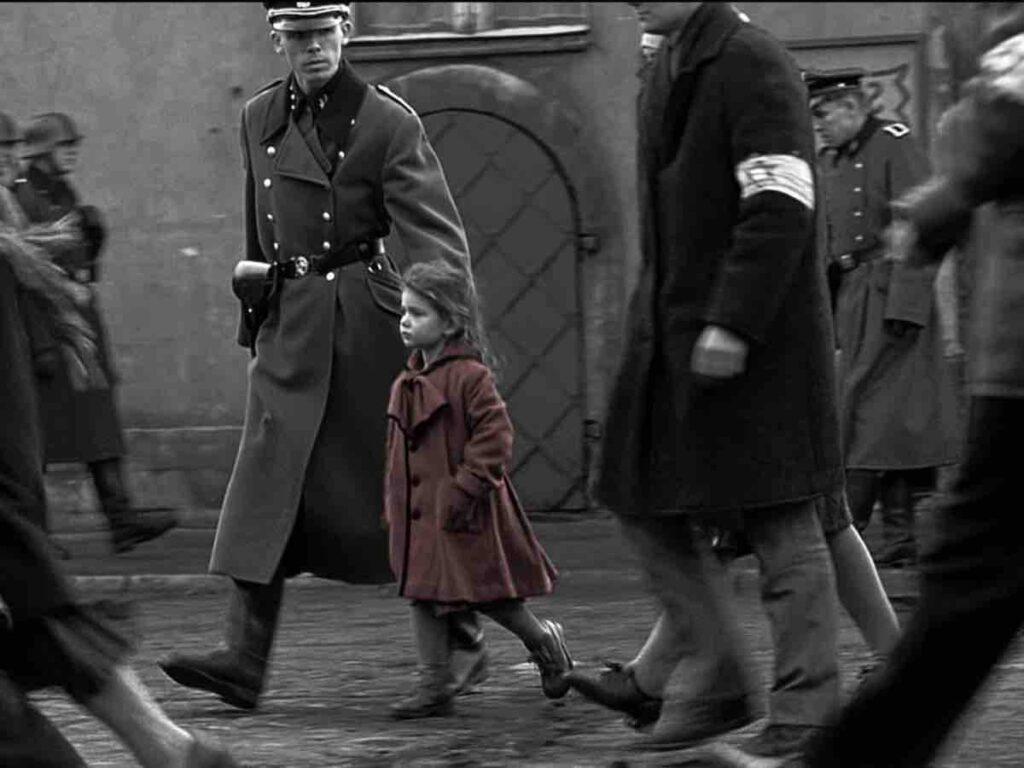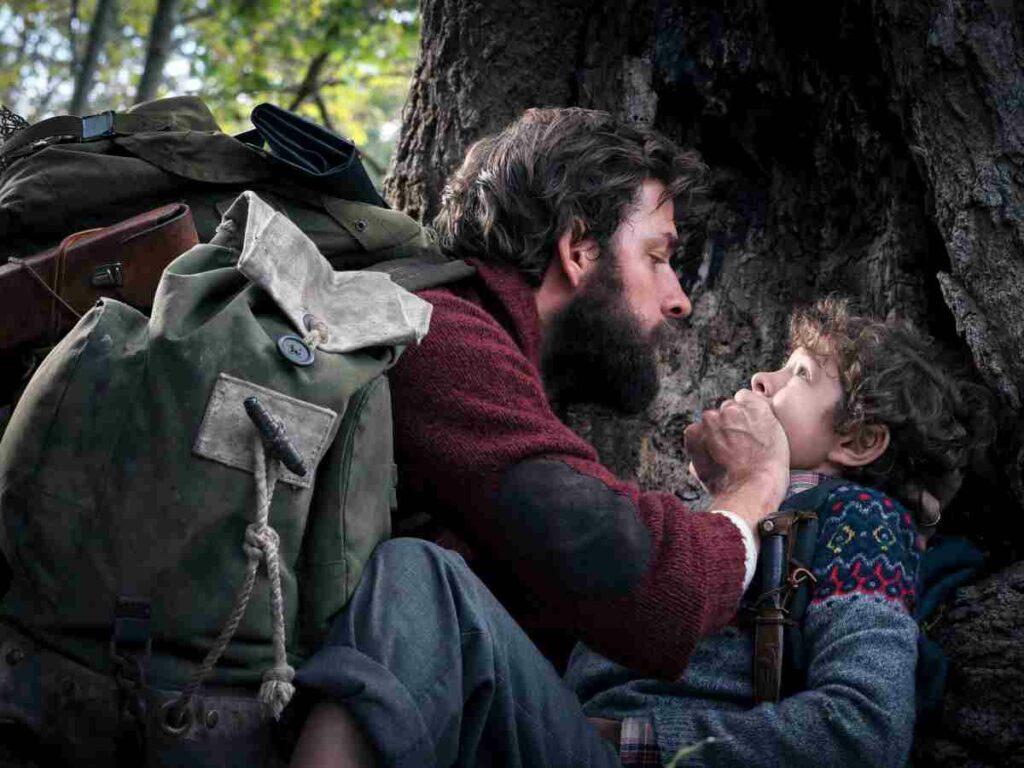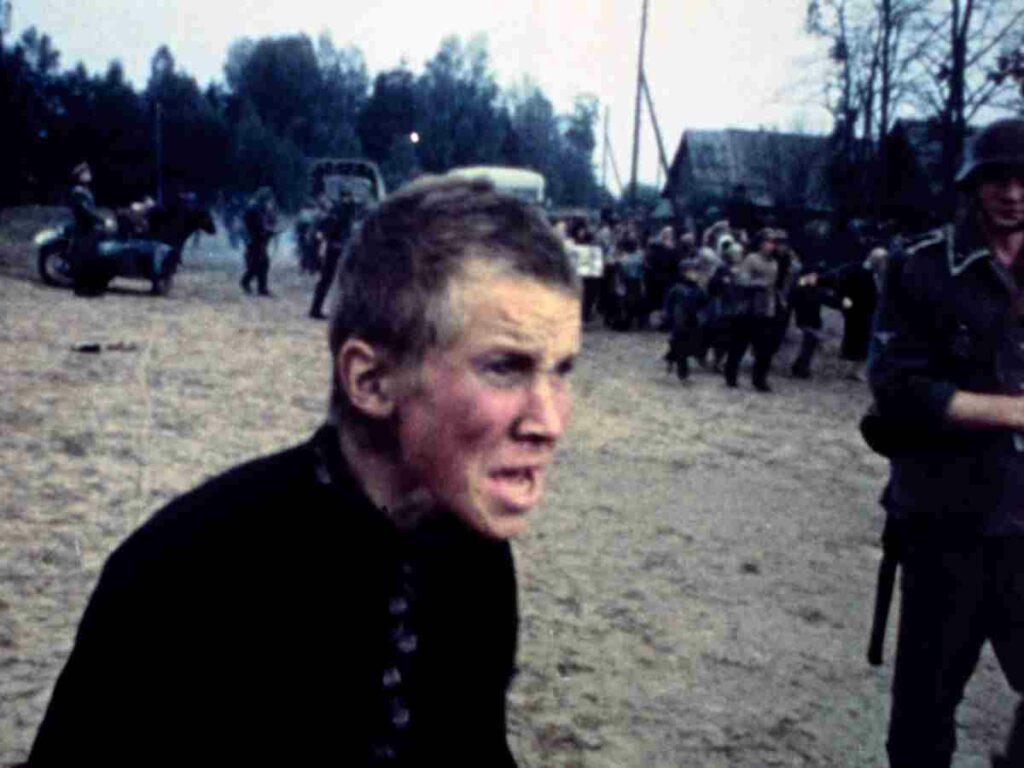From The Godfather (1972) to No Country for Old Men (2007), these are the best R-rated movies worth adding to your watchlist.
Filmmakers have constantly pushed the technical boundaries of storytelling, challenging existing notions while bringing in fresh ideas. Unlike other arts, cinema established itself as a medium of mass consumption, dealing with mature, adult themes. Naturally, the establishment and its institutions wanted to control the kind of stories the masses could watch on screen. In the early 1930s, America was gradually recovering from the Great Depression and Hollywood went through massive changes. The era marked the rise of studio-era and star-system. New genres came to the fore and thrived.
The 1930s were often regarded as the “Golden Age of Hollywood”. At the same time, the nexus of the Catholic Church and conservative politics called for stringent censorship. In 1934, William Hays, the President of Motion Picture Producers and Distributors of American (MPPDA), enforced a set of guidelines for films made and released in America. Commonly referred to as Hays Code, the censorship rules defined the thematic and visual content of Hollywood for the three decades that followed. By the mid and late-1960s, the turbulent socio-political climate in America began to impact its cinema. The Hollywood studio system was steadily disintegrating throughout this decade.
Daring new-generation filmmakers started testing the boundaries of Hollywood’s old-school censorship guidelines. Films like Who’s Afraid of Virginia Woolf? (1966), Bonnie and Clyde (1967) signaled the arrival of creators who were determined to realize their vision on-screen. Finally, the Motion Picture Association of America (MPAA) unveiled a new grading system in November 1968, which included the letter “R” for “Restricted”. A theatrically exhibited R-rated film requires accompaniment of a parent or adult guardian for viewers under 17.
Of course, the MPAA rating isn’t without its flaws and controversies, but that deserves a whole new article. For now, let’s take a look at some of the best R-rated movies (American), since the classification system came to be:
1. The Godfather (1972)

One of the first R-rated films I saw was Francis Ford Coppola’s gangster epic The Godfather. Like most movie-lovers who experienced Coppola’s screen magic for the first time, I too was left speechless. The story showcases the cycle of violence and betrayal which affects the mafia boss, Vito Corleone (Marlon Brando). We also witness the deadly transformation and rise of Vito’s youngest son Michael (Al Pacino).
This glorious tale of 20th century American Capitalism has plenty of extremely violent scenes. In fact, the film redefined the portrayal of on-screen violence after the emergence of MPAA ratings in 1968.
2. The Exorcist (1973)

William Friedkin’s brilliant adaptation of William Peter Blatty’s shocking novel turned out to be one of the highest-grossing R-rated films of its time. It centres on a 12-year old girl possessed by a malevolent demonic entity. The film’s later half is full of disturbing, scary sequences as two veteran priests perform a risky exorcism ritual.
The film’s provocative and violent imagery pushed the boundaries of Hollywood horror cinema. In fact, the terrifying visceral content influenced mainstream horror films across the globe. The Exorcist nearly escaped the more restrictive X rating.
3. Chinatown (1974)

Roman Polanski’s Chinatown is an astonishingly layered noir classic set in 1930s L.A. The labyrinthine narrative follows cynical and wise private investigator Jake Gittes (Jack Nicholson) as he investigates a complex web of deceit and corruption in the city’s Chinatown district. The film deals with themes of sexual abuse, disillusionment, corruption and greed.
Unlike Polanski’s controversial psychological horrors Repulsion and Rosemary’s Baby (released before MPAA ratings), Chinatown isn’t as disturbing. It would have received a PG-13 rating if it were made now. Yet, Chinatown is an unrelentingly bleak mystery that can only be appreciated by adult audiences.
4. One Flew Over the Cuckoo’s Nest (1975)

Milos Forman’s multiple-Oscar winning drama is based on Ken Kesey’s 1962 eponymous novel. The story chronicles war veteran and criminal McMurphy’s (Jack Nicholson) admission in a psychiatric facility. He rebels against the oppressive nurse Ratched (Louise Fletcher) and questions the abusive treatment to the patients. Shot in a real psychiatric institution, the film closely portrays society’s negative attitude towards people with mental health issues.
There are several upsetting moments in this R-rated film. The electroshock therapy scenes and the disturbing aftermath of a suicide can rattle the toughest viewers.
5. Taxi Driver (1976)

Taxi Driver chronicles the descent of Travis Bickle, a mentally unstable Vietnam War veteran. He works as a night-time taxi driver and opts for violence to purge the perceived decadence in the city. Written by Paul Schrader, this violent tale of a frustrated anti-hero ran into troubles with MPAA.
The climactic shoot-out scene needed to be edited a bit to avoid an X-rating. There are unconfirmed reports that Scorsese stayed up all-night drinking with a loaded gun while contemplating his options. Though Scorsese eventually de-saturated the colors in the scene, the emotional and visceral impact of Taxi Driver’s climax still shocks us.
6. Alien (1979)

Driven by the success of Spielberg’s Jaws, screenwriter Dan O’ Bannon pitched an idea for a terrifying outer-space creature-feature. While Jaws got away with a PG rating, director Ridley Scott went for a more violent portrayal of the extraterrestrial beast. Another vital artist who defined Alien’s downright scary and grotesque imagery was H.R. Giger. His designs of the xenomorph and the face-hugger still hold the power to shock us.
The grimy, claustrophobic aesthetics added to Alien’s horror quotient. Unlike the glitzy space-age design of Star Wars (1977), Scott gave us the most-terrifying vision of space. The R-rated action-driven sequel by James Cameron was also an immersive experience.
7. Apocalypse Now (1979)

Coppola’s magnum opus was addressed as one of the most troubled productions ever. The film was loosely based on Joseph Conrad’s novella Heart of Darkness, and was also inspired by journalist Michael Herr’s Vietnam war reportage Dispatches. The film revolves around troubled army captain Benjamin Willard (Martin Sheen), who takes a small crew into Cambodia and tries to track down the crazy and renegade colonel Kurtz (Marlon Brando).
Despite all the production troubles, the film was a critical and commercial success. The chaos of the shoot became the subject of a documentary in 1991.
8. The Shining (1980)

Censorship issues plagued most of Stanley Kubrick’s cinema. Films like Lolita, A Clockwork Orange, and Eyes Wide Shut saw Kubrick push the cinematic boundaries when it came to portraying violence and sexuality. Compared to those films, The Shining wasn’t as affected by censorship controversies. It belonged to the horror genre, which had a demand in the mainstream after the success of Rosemary’s Baby and The Exorcist.
Kubrick’s loose adaptation of Stephen King’s novel is set in a remote mountain hotel, where a family man named Jack Torrance joins as a caretaker. Jack’s worsening psychosis and a paranormal phenomenon at the hotel make for an unnerving experience.
9. Raging Bull (1980)

The film was a passion project for both Scorsese and De Niro. Jake La Motta was a Bronx-born boxing legend, whose animalistic rage on and off the ring is the subject of the narrative. It offers a raw, unflinching look at the boxing world.
Raging Bull is Scorsese’s most interesting depiction of masculine viciousness and brutality. The director’s best works delicately balance objectivity and empathy. In Raging Bull, for instance, we closely perceive the experiences of a flawed boxer, but at the same time, are separated from the character just enough to allow us to consider his destructive actions.
10. The Thing (1982)

John Carpenter’s spooky and gory film about an extraterrestrial monster came out in the same year as Spielberg’s family-friendly alien adventure, E.T. It gained cult status in the sci-fi horror genre. The narrative is set in a remote part of Antarctica, where a group of American scientists rescue a dog, shot at by a Norwegian helicopter. Soon, the scientists discover that the dog is an alien which can mimic anything it kills.
The grotesque display of the alien’s physical transformations was ably achieved through practical effects. And these moments transcended conventional horror tropes and still have the power to unsettle us.
11. Blue Velvet (1986)

David Lynch is a filmmaker with a distinct vision. In his fourth directorial venture, he establishes his preoccupation with the human subconscious. Blue Velvet is set in a friendly small-American town. A young Jeffrey (Kyle MacLachlan) returns home from college to see his ailing father. One day, he finds a severed human ear in a neglected vacant lot. And the bizarre discovery takes Jeffrey on a dark journey.
On the outset, Blue Velvet is the study of moral rot underlying the great American dream. Lynch explored these themes further in his subsequent works like Twin Peaks and Mulholland Dr.
12. Die Hard (1988)

The 1980s were a lush period for the action adventure genre in Hollywood. Raiders of the Lost Ark, First Blood, Aliens, Predator — the decade gave us all. But the decade’s most iconic R-rated action film was John McTiernan’s hostage thriller. Die Hard made Bruce Willis a star. His intrepid cop character John McClane gained entry into the action hero hall of fame.
The film largely works due to the fierce antagonist, played by the incredible Alan Rickman. It contains strong language and plenty of shootouts, but nothing overly graphic.
13. Do the Right Thing (1989)

While there has been some improvement in how blacks are portrayed in Hollywood since the Civil Rights Movement of the 1960s, Spike Lee’s entrance allowed the African-American experience to be perfectly captured in American cinema. Lee’s second directorial venture was a comedic drama which focuses on the racial acrimony and inequality in a Brooklyn neighborhood. The director himself played the central character Mookie.
Spike Lee calls for empathy and mutual understanding through this radical masterpiece. The film was largely rated R for its strong language which includes numerous racial epithets. There’s an intense violent scene towards the end, but nothing graphic.
14. Goodfellas (1990)

Goodfellas was Scorsese’s second mobster movie after Mean Streets. He utilizes the criminal underworld to revisit his favorite theme: violent, self-destructive masculinity. The film is based on the true story of Henry Hill (Ray Liotta), an associate in the Lucchese crime family, who later turned into an FBI informant.
Scorsese brilliantly tracks down Hill’s disillusionment and corruption as he understands what it truly means to be a gangster. Featuring a great ensemble cast including De Niro and Joe Pesci, the film’s violence is brutal and shocking. Few excessive violent scenes were removed to get an R-rating from MPAA.
15. The Silence of the Lambs (1991)

Jonathan Demme’s R-rated blockbuster was more than just a blood-and-guts horror thriller. Cleverly scripted by Ted Tally based on Thomas Harris’ best-selling crime novel series, it featured two strong performances that became cultural touchstones. The film follows young FBI recruit Clarice Starling as she tries to get into the mind of an imprisoned serial-killer to capture another vicious serial-killer.
The film has quite a few violent, gory moments: the mutilated dead bodies, Hannibal Lecter’s shocking escape scene. Yet it was all done artfully without being exploitative.
16. Terminator 2: Judgment Day (1991)

As a kid, I watched T2’s action set-pieces numerous times on TV. Only later, when I had the chance to watch the whole Terminator franchise, I realized James Cameron’s film was rated R. The sci-fi action blockbuster revolves around a cyborg sent from the future to protect a boy from being murdered by a more deadly cyborg.
Perhaps, because T2 wasn’t rooted in reality, the moments of peril and violence didn’t seem too disturbing or traumatizing for a lot of us who watched it as kids. Sarah’s dream sequence was a little frightening. And of course, the film contains strong language and glimpses of male nudity.
17. Schindler’s List (1993)

Spielberg was long associated with blockbuster cinema like Jaws, Indiana Jones, E.T. and Jurassic Park. However, films like The Colour Purple and Empire of the Sun proved he was much more than a blockbuster filmmaker. His brilliant cinematic vision peaked with Schindler’s List, an unflinching and devastating Holocaust drama.
Since the filmmaker had never made an R-rated film before, critics and industry insiders felt that Schindler’s List would be a sentimental PG rated film. They were skeptical that Spielberg would employ melodramatic tropes to detail Holocaust. Instead, what he offers is an unforgettable, profoundly moving memorial on the genocide of European Jews.
18. The Shawshank Redemption (1994)

Frank Darabont’s prison drama is based on Stephen King’s short story. It revolves around Andy Dufresne (Tim Robbins), a man wrongfully charged with double murder and serving a life sentence at the Shawshank prison. The story chronicles Andy’s perseverance and determination to achieve freedom. Though Darabont doesn’t shy away from showcasing intense, darker chapters of prison life, the film is largely about hope and friendship.
The Shawshank Redemption was a box-office failure but the film’s mass appeal and universal themes over the years have earned it a cult status.
19. Pulp Fiction (1994)

Tarantino’s Pulp Fiction is a clever exercise in cinematic storytelling. It chronicles three distinct, interrelated stories in seven jumbled chapters and leaves it to us to figure out the coherent order of the puzzling narrative. Moviegoers were still reeling from the shock of Tarantino’s fantastic debut Reservoir Dogs – a bloody heist drama – when he gave us this tale of extreme violence, chaos, black comedy and faith.
Casual conversations with strong language, fascinating monologues, and slow build-up to an explosive moment of violence — all the signature Tarantino elements were perfectly realized in Pulp Fiction.
20. Se7en (1995)

David Fincher’s ingenious thriller follows the hunt for a serial-killer whose each victim represents one of the seven deadly sins. Brad Pitt and Morgan Freeman remarkably play the central detective characters. While Se7en contains strong graphic imagery, a sense of danger and threat pervades the narrative. It all culminates with a tense, unsettling final showdown.
Se7en isn’t gory by today’s serial-killer thriller standards. But what’s particularly disturbing is that it denies us a moment of catharsis.
21. Heat (1995)

Michael Mann’s crime thriller promised the clash between acting titans De Niro and Al Pacino. Heat not only delivered on the promise, but also gave us cool cinematography and fascinating character dynamics. It follows a determined cop in pursuit of an ever-evasive career criminal. Their intense rivalry is depicted through three hours of complex drama and incredible action.
Mann’s visual pyrotechnics peaked during the tautly staged bank robbery scene. Though there are plenty of shoot-outs, the violence in Heat is somewhat restrained. However, it contains strong language and an upsetting sequence of self-harm.
22. Saving Private Ryan (1998)

Spielberg’s WWII drama opens with one of the most brutal scenes in film history. It takes us back to American troops’ invasion of Normandy on June 6, 1944, the camera unflinchingly covering the carnage on the beach. It’s perhaps one of the most realistic on-screen depictions of a blood-soaked battlefield, coming from the maker of blockbuster classics.
Besides the harrowing D-Day sequence, there are devastating moments aplenty, both emotionally and visually. Spielberg’s film didn’t treat combat as a mere spectacle. Like the great Soviet war film Come and See, it shatters our illusions about war.
23. The Matrix (1999)

The Wachowskis’ sci-fi blockbuster turned out to be the second most successful R-rated sci-fi franchise after Terminator. While T2 had a storyline and action that was pretty easy to follow, The Matrix went for a more complex set-up. Each astounding revelation in the story opened up more questions. In fact, studio executives were hesitant over the commercial prospects of Wachowskis’ vision.
However, the film went on to revolutionize the sci-fi genre plus the use of special effects in big-budget cinema. Apart from the philosophical core of The Matrix, the film’s enduring appeal lies in its cool action sequences, which was influenced by martial arts films and Japanese animation.
Where to Watch: HBO Max
24. Fight Club (1999)

David Fincher’s marvelous adaptation of Chuck Palahniuk’s novel, though received mixed response from critics, gradually solidified its position in pop-culture. Fight Club follows an unnamed insomniac office worker (Edward Norton), who befriends a self-assured and eccentric soap salesman Tyler Durden (Brad Pitt). Their brain-child is a club you’re forbidden to talk about.
Fight Club is a satire on consumer capitalism and explores the crisis of masculine identity. It holds a mirror to modern male psychology and how it adversely impacts our collective social and cultural behavior.
25. Memento (2000)

Nolan’s R-rated mystery thriller contains strong language and infrequent moments of strong violence. Besides, the film’s mind-bending story structure isn’t easy to comprehend on the first watch.
The film follows a man who is incapable of retaining short-term memories. He claims that his condition is the result of an injury he sustained while trying to prevent his wife’s murder. What’s more intriguing about Memento is the reverse chronology and a non-linear narrative which is designed to challenge our perception of the protagonist and his story.
26. Gladiator (2000)

Ridley Scott’s Gladiator is set in ancient Rome and follows the sad and eventful life of the powerful military leader General Maximus (Russell Crowe). The R-rated epic adventure transports us to a time and place, where people killed each other in the name of gladiator contests for the sake of the general public’s crude entertainment. The film is violent, but not too gory or explicit.
Scott’s vision of ancient Rome was apparently more violent here than in classics like Ben-Hur (1959) and Spartacus (1960). However, since the release of Gladiator, we’ve been subjected to numerous violent historical and fantasy series like Spartacus (2010-2013) and Game of Thrones (2011-2019).
27. Requiem for a Dream (2000)

MPAA has gained notoriety over its rating decisions. One of the most memorable episodes in the five-decade plus history of MPAA is the initial NC-17 Rating (formerly ‘X’) for Darren Aronofsky’s powerful and moving addiction drama Requiem for a Dream. Later, a few frames of controversial imagery were edited out for an R-rated DVD version.
The film was based on Hubert Selby Jr.’s 1978 novel of the same name. It unflinchingly examines the destructive effects of addiction. Apart from Danny Boyle’s Trainspotting (1996), no other film in the history of cinema has viscerally overwhelmed us to depict the mental state of addicts.
28. There Will Be Blood (2007)

Based on Upton Sinclair’s 1927 novel Oil!, There Will be Blood is a fascinating character study of an exceedingly ambitious man. The central character Daniel Plainview is played to perfection by Daniel-Day Lewis. The film opens in the late 19th century as a silver prospector accidentally strikes oil. Subsequently, he buys petroleum-rich infertile lands from poor Texan farmers, and transforms himself into an oil prospector.
The wealth and power, however, doesn’t offer Plainview a happy or peaceful life. He finds his archenemy in a smug evangelical preacher Eli Sunday (Paul Dano). The film was rated R for numerous violent and intense moments.
29. No Country for Old Men (2007)

Coen Brothers’ adaptation of Cormac McCarthy’s novel is set in early 1980s West Texas. A local man discovers bodies strewn across the desert due to a botched drug deal. He also finds a bag full of money and decides to escape with it. But the cartel sends a psychopathic hit-man to fetch the money. Anton Chigurh can kill anyone for the sake of thrill and pleasure.
No Country for Old Men features a terrifying series of violent acts. Apart from the brutal multiple murders on-screen, Coen Brothers’ deliberate slow-pace maintains tension throughout. And, the violent acts offer no catharsis to viewers.
30. Mad Max: Fury Road (2015)

George Miller’s big-budget Mad Max movie didn’t disregard the gritty roots of the original Mad Max trilogy (1979-1985). In fact, Miller’s R-rated action blockbuster expanded the post-apocalyptic story with relevant and timely themes. Perhaps, Fury Road is the greatest big-screen mayhem we witnessed after Cameron’s T2: Judgment Day. Tom Hardy brilliantly underplays in the titular role, a deeply traumatized man of action.
However, the vital character of the narrative is Furiosa (Charlize Theron), a fierce fighter who goes against the tyrannical ruler of a regressive desert kingdom to free herself and a bunch of enslaved women. The film’s incredible practical stunts are a wonder to behold.
Conclusion
There you go! These are some of the best R-rated movies. Since this content classification system was established by an American Trade Association for films shown inside America, the sole focus of the list was American cinema. If you’re done with the above, check out M*A*S*H (1970), The French Connection (1971), The Godfather Part II (1974), The Deer Hunter (1978), L.A. Confidential (1997), Eternal Sunshine of the Spotless Mind (2004), Inglourious Basterds (2009), Drive (2011), 12 Years a Slave (2013), Whiplash (2014).




